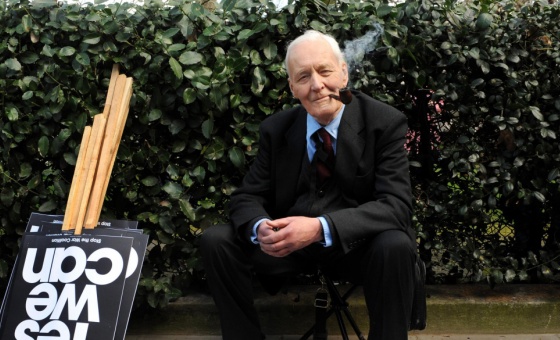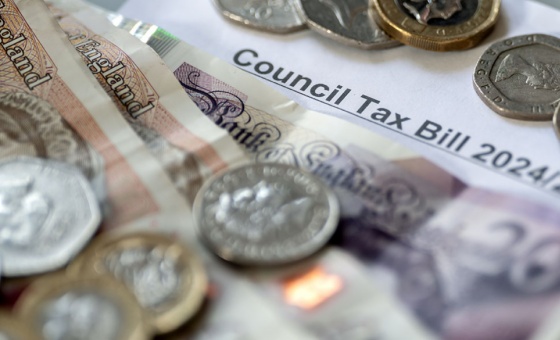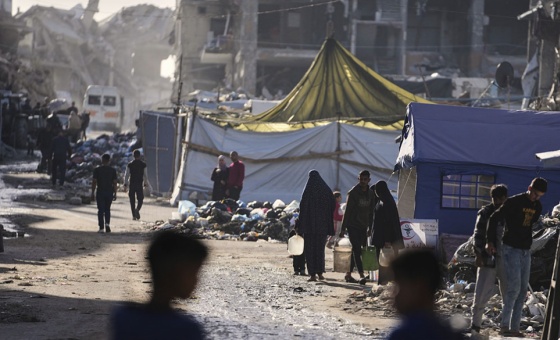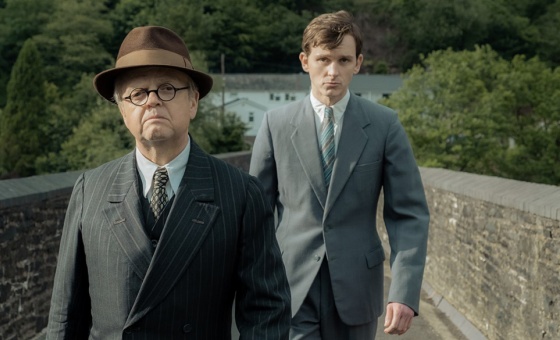This is the last article you can read this month
You can read more article this month
You can read more articles this month
Sorry your limit is up for this month
Reset on:
Please help support the Morning Star by subscribing here
LAST year, racism in football was back in the headlines on an almost weekly basis. So why is it on the rise in our sport and what can be done about it?
Show Racism the Red Card (SRtRC) has been highlighting how racism has changed over the years, with a rise of Islamophobia and anti-immigration rhetoric. A “hostile environment” for immigrants has been in place since the Labour government of the late 1990s and has only been exacerbated ever since.
From the work SRtRC does in schools and our surveys of young people’s attitudes, we’ve found a consistent perception that racism is fuelled by the constant barrage of anti-Muslim and anti-immigrant narratives.
At the grassroots of football, racism is a reflection of racism in society. But in British football stadiums, most fans know that the repercussions of racism are not just a criminal offence but the prospect of a long-term ban from football. We believe that you are still more likely to witness racism travelling to a game than inside the stadium.
Racism in football stadiums in Britain declined between 1970 and the 1990s because of a combination of factors:
-
Campaigns by anti-racist fans that were eventually backed by many football clubs.
-
The large increase in black players and the positive impact of all players, the PFA and managers in speaking out against racism.
-
All-seater stadiums.
-
Banning orders for racism with changes in the law.
In the late 1990s, both SRtRC and Let’s Kick Racism out of Football (now Kick it Out) were established. Both organisations helped contribute to the ethos that racism has no place in football.
But, over the last 10 years, racism has been on the rise in Britain. In the last five years, reported race hate crime in England and Wales has doubled to almost 100,000 cases annually.
The campaign around Brexit, combined with the hostile environment towards migrant workers, definitely contributed to this — hence the huge spike in hate crime after the EU referendum result in 2016.
Stormzy was right to point out: “Before, people had learned to hide their racism. If you felt something bad about black people, about Muslims, you had to shut up. Now these people have the confidence to come out in public and say everything. It’s scary.”
An overt attitude of “haven’t you gone home yet?” has been far more prevalent in the last three years. Stormzy, as well as figures in football such as Gary Neville, are right to highlight that certain politicians have encouraged this racist language.
So if the rise of racism in football simply reflects society, what then can be done about it?
SRtRC strongly believes that the key to ending racism is anti-racism education. We are not against changes in the law (the Stephen Lawrence Family Campaign and the subsequent legal changes were a major step forward), but locking people up for longer does not change attitudes. And given the state of the prison system after a decade of austerity, it could make things worse.
Similarly, SRtRC is not opposed to football banning orders — fans need to know that racist behaviour will result in a very long ban from football. But banning fans for life does not stop them being racist and may, without education, actually make them angrier and further entrench their racist views.
Other suggestions that have been mooted to help combat racism include closing stadiums to fans on match days and levying points deductions.
In other parts of Europe, stronger measures may need to be discussed because of a total lack of anti-racism campaigning. But in Britain these measures are flawed because they would, in my opinion, set the movement back. Why? Because they would impact ordinary, decent supporters who have not engaged in racist behaviour — hurting the many, for the actions of a few.
The great British success story, in terms of racism in football, is that we have isolated the racists. In the 1970s it was anti-racist fans who were isolated, but now this has been completely turned around. By closing stadiums or stands, or issuing points deductions, we would be taking punitive action against ordinary fans who have not been racist.
So what else can be done?
Football is the wealthiest game in Britain — the Premier League is worth billions of pounds. The money to invest in anti-racism education is present and vital.
Over the last few years, the anti-homophobic Rainbow Laces campaign has been a major improvement in football and provides an excellent blueprint for a similarly coordinated, in-depth, anti-racism campaign.
Such a high-profile campaign in professional football must be backed up by resources and education throughout the game, particularly at the grassroots level.
SRtRC supports the call by the PFA for the government to focus on the issue of racism in football. The previous sports minister Mims Davies started the process of looking at the key issues including the lack of black representation at senior levels in football. But this consultation needs to be completed and a report produced that will lead to real action.
Last year, senior England players and their manager spoke out against racism to an unprecedented extent. SRtRC was established in 1996 with the aim of harnessing the high-profile and role-model status of professional footballers to combat racism in society. But now more than ever, we need role models to stand up and assist with anti-racism education campaigns.
With leaders like Gareth Southgate, Raheem Sterling, Danny Rose and Jurgen Klopp — to name but a few — we are confident that we can make an even larger impact with a better resourced anti-racism education campaign.









